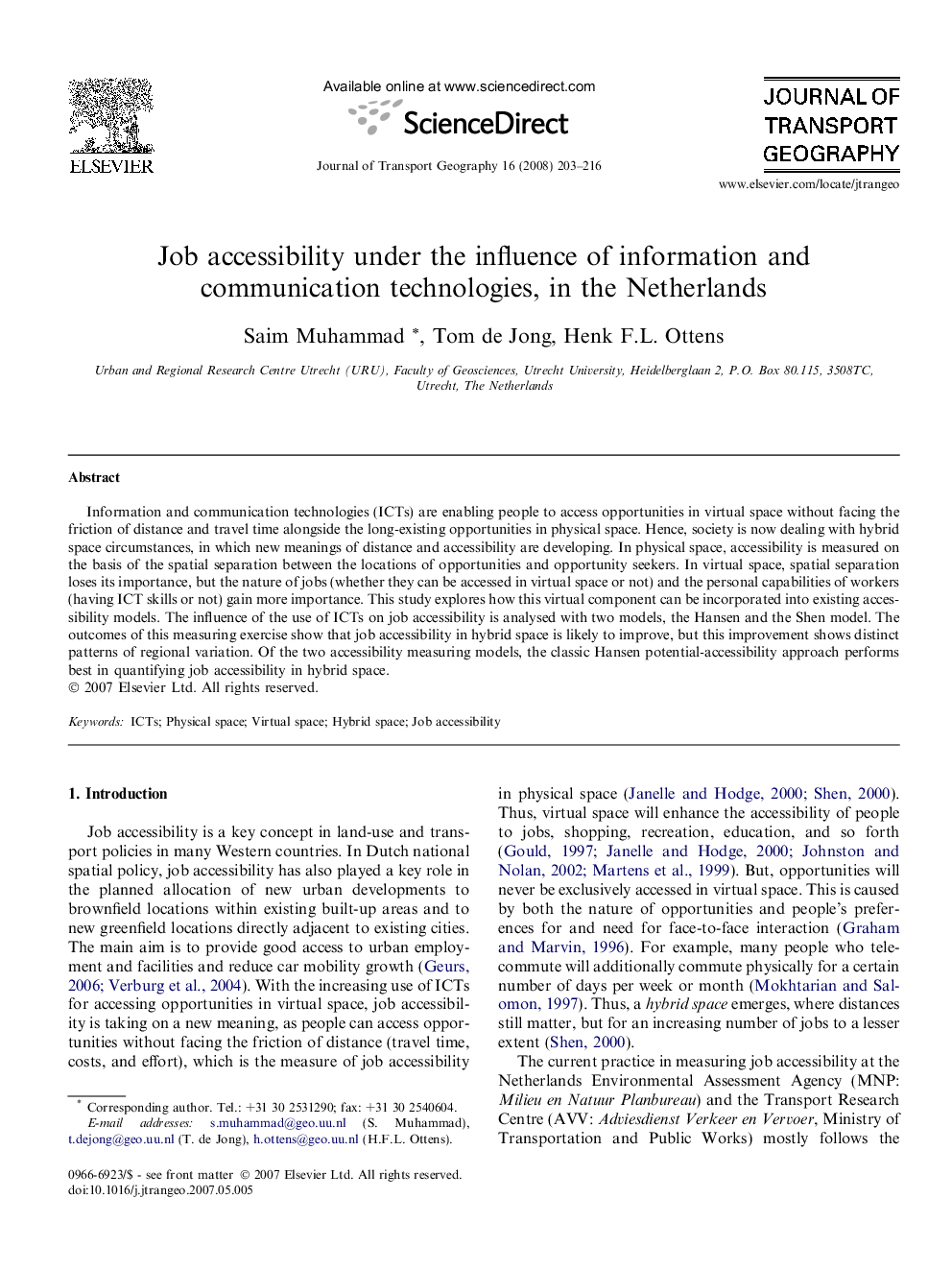| Article ID | Journal | Published Year | Pages | File Type |
|---|---|---|---|---|
| 1059952 | Journal of Transport Geography | 2008 | 14 Pages |
Information and communication technologies (ICTs) are enabling people to access opportunities in virtual space without facing the friction of distance and travel time alongside the long-existing opportunities in physical space. Hence, society is now dealing with hybrid space circumstances, in which new meanings of distance and accessibility are developing. In physical space, accessibility is measured on the basis of the spatial separation between the locations of opportunities and opportunity seekers. In virtual space, spatial separation loses its importance, but the nature of jobs (whether they can be accessed in virtual space or not) and the personal capabilities of workers (having ICT skills or not) gain more importance. This study explores how this virtual component can be incorporated into existing accessibility models. The influence of the use of ICTs on job accessibility is analysed with two models, the Hansen and the Shen model. The outcomes of this measuring exercise show that job accessibility in hybrid space is likely to improve, but this improvement shows distinct patterns of regional variation. Of the two accessibility measuring models, the classic Hansen potential-accessibility approach performs best in quantifying job accessibility in hybrid space.
